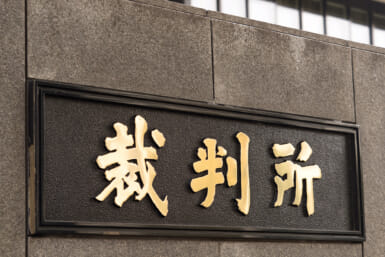by Henry Scott Stokes
Why, basically, am I so optimistic on Japan, given the bad signs?
Let’s quickly recap on what those bad signs are. The most commonly cited one is debt. Accumulated debt in the economy as a whole amounts to something like five-to-six times GNP; out of that public debt alone amounts to 150 percent of GNP and is rising at a speed that most experts consider to be unsustainable for more than a year or two.
As to the banks, they are said to have bad loans on their books of at least ¥40 trillion, to use an official number. But the actual total may be four-to-five times higher. Those sour loans then could be about one-third of the economy—one third of GNP…
The truth is that no one knows how far gone the banks are. No numbers we have seen to date take account of the recent downward lurch in their equity holdings. Their real balance sheets at this point could well show that they are underwater, in the sense of showing what accountants call “net negative assets.” They are worth nothing.
However, hold on a moment. One of the first things I learned, when I came here in the 1960s, was that the banking system was a pack of cards. What held it together was the State, meaning the all-powerful Ministry of Finance. The banks had lent far too much for their own good, and had not discriminated between good and bad customers. But that didn’t matter, experts said, because the good old Japanese Government stood behind them, and guaranteed them.
So where are we now? The problem is that the government caved in and disappeared. How exactly did this happen? To get to the roots of the matter you have to go back to the Nakasone administration at least—that is the early 1980s. Yasuhiro Nakasone was the last premier to serve for a really long period in office, nearly six years actually. He is credited with being one of the most intelligent men to hold that high office.
He has a speculative turn of mind—he is interested in new ideas—and he vigorously promoted, in the era of Thatcher in the UK and of Ronald Reagan in the U.S., the idea that a free economy was best. He moved for the breakup of NTT, as a monopoly. He introduced the idea that the market should be the arbiter of prices. Right across the board.
He proved to be a tremendous underminer. Free enterprise is great, but the Japanese Government had little or no experience of it. Nakasone-san’s many encomia—this was not only his doing; such was the common sense of that era—were interpreted as meaning “just take hands off everything, stop issuing directives all the time and let the market decide.”
Such was the climate in which the Japanese let their Bubble grow and grow, uncontrolled in the late 1980s. That thing was pricked by the authorities—by the Bank of Japan—in 1990. But here they’re still digesting what happened subsequently, a crumbling of asset values on a Himalayan scale.
The good news, I am glad to say, is that the process of cleaning up the banks’ loan portfolios has come a long way. I get this from my friend Nobuyuki Nakahara—a man who is widely quoted in the Japanese press these days, as well as in the international press (as a member of the policy board of the BOJ for four years up to this April, he was a lone voice crying in the wilderness—calling for expansionary measures to restore growth in Japan).
Here’s what he says: Lending by the main classes of banks has shrunk tremendously. It has contracted, month by month, for something like 44 straight months—down to a total of ¥421 trillion by August, as compared with more than ¥600 trillion a couple of years ago.
This steady squeezing down of loans has meant a weeding out of excessive lending, some of which dates to a tremendously long time ago. “This process needs to go on for another two or three years, we need a further 10% contraction in bank lending, and then we shall be all right,” Nakahara-san considers. “So this is a vital two-to-three years ahead of us now.”
This veteran businessman— Mr. Nakahara served for eight years as president/CEO of an oil refining and petrochemical company; he has hands-on experience—thinks that now is the time to invest in Japan. He asserts that U.S. stocks still have to go down. The shakeout still has not gone far enough on Wall Street, he considers. “There is an alternative, people will see, and that is Japan,” says Nakahara-san.
I think he’s right. Take one indicator: new issues. Some 13 companies are going public in October. I wager that there will turn out to have been more IPOs in Tokyo than in New York this month, when the results are in. The issues are smaller here, but the actual number of companies coming to market in Tokyo way exceeds the number in the U.S., according to my informants there.
There is one other thing to note, assuming that your mind is not closed to good news or the possibility thereof. The much-abused Ministry of Finance— having failed in its remit in the last 15 years; having let that monstrous Bubble grow; having been terribly slow to clean up afterwards—is finding its way back to its old role of serving as the central point of decision in government.
So far progress in this regard was piecemeal and largely unobserved by the press. However, the most notable official there, Vice Minister Haruhiko Kuroda, is getting high marks of late from foreign commentators. See, for example, a Sept. 24 column by my classmate Andrew Smithers in the London Evening Standard headed, “Signs of life for Japan in spite of BOJ’s bungled op.”
It looks as if Kuroda-san is a helmsman. Perhaps that is what Japan has chiefly lacked in these last ten years, when there were ten prime ministers—a bit of the old leadership. Prime Minister Junichiro Koizumi is really a gutsy guy. But it needs much more than one powerless person perched up there—and being sniped at all the time—to get things going here again. Mr. Nakahara believes that the collective—the tribe—is mending itself. That is his conclusion, watching the banks shrink their lending. Somehow or other the system is curing itself.
Do you believe that? That could be more important than the Ministry of Finance getting its act together, but if you put the two tendencies together… Wow!
Time to invest in Japan? Be a contrarian.








